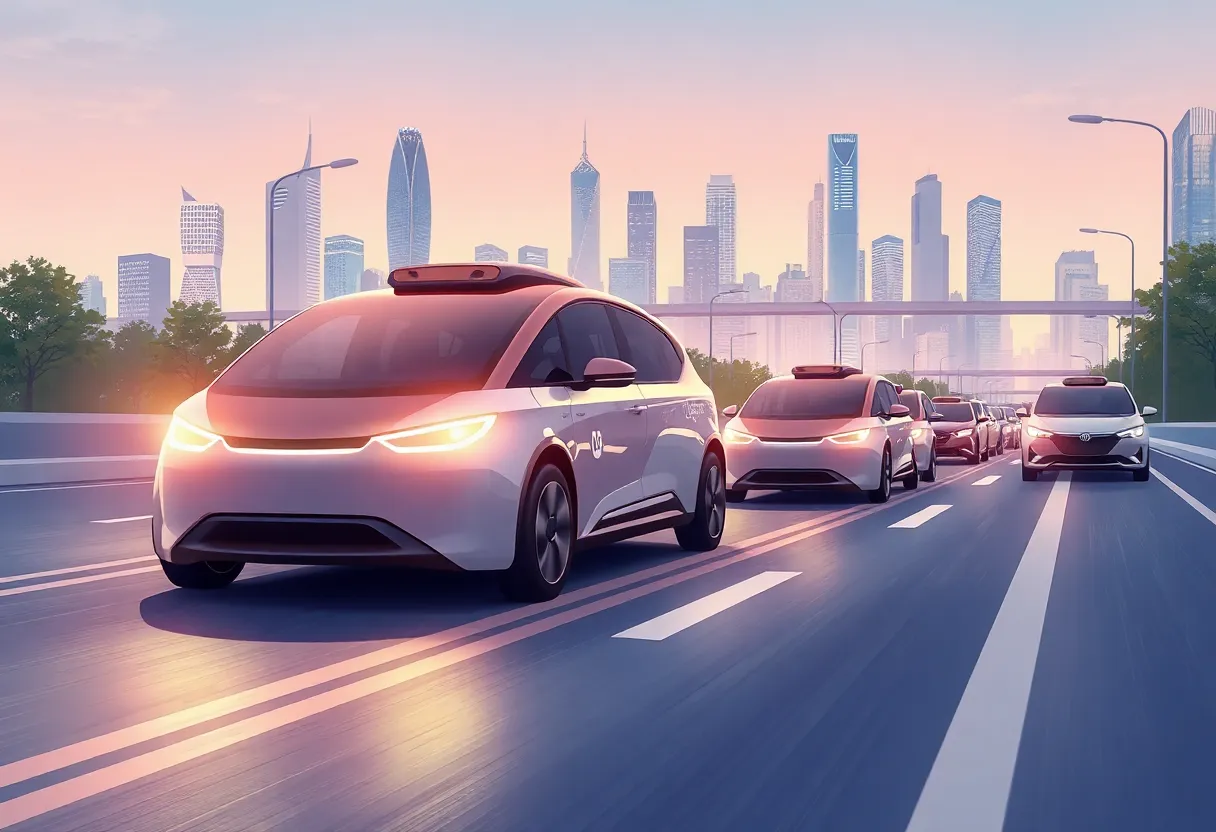

A depiction of advanced autonomous vehicles operating in an urban environment, representing the future of transportation.
The U.S. Department of Transportation has introduced a new Automated Vehicle Framework aimed at simplifying reporting requirements and expanding exemptions for domestic manufacturers of autonomous vehicles. Key changes include relaxed crash reporting rules for vehicles with advanced driver-assistance systems, allowing companies five days to report accidents. Additionally, the Automated Vehicle Exemption Program has been opened to domestic producers, signaling increased opportunities for innovation in the automotive sector. While safety remains a priority, industry voices express concerns regarding the balance between regulatory oversight and technological advancement.
In a move that could significantly change the landscape for the automotive industry, the U.S. Department of Transportation (DOT) has unveiled a new Automated Vehicle Framework. This fresh approach is designed to streamline reporting requirements while also expanding exemptions for domestic producers of autonomous vehicles.
One of the standout features of the new framework is the introduction of a standing general order (SGO) concerning crash reporting specifically for vehicles equipped with advanced driver-assistance systems (ADAS) and automated driving systems (ADS). The updated rules signal a shift away from a very tight 24-hour crash reporting requirement. Now, companies producing Level 2 system vehicles will have a generous five days to file their incident reports.
Under the new guidelines, manufacturers will only need to report crashes involving Level 2 ADAS vehicles when there is a fatality, instances of hospitalization, or if airbags are deployed. Additionally, if the crash involves vulnerable road users, it must also be reported. That means if a vehicle like Tesla’s Autopilot is involved in a non-fatal incident and no airbags are deployed or vulnerable pedestrians are involved, companies can skip the reporting process altogether.
The announcement also brings changes to the Automated Vehicle Exemption Program (AVEP). This program, which was previously open only to imported autonomous vehicles, is now available for domestically produced self-driving cars. This expansion can lead to an increase in innovation within the American automotive sector as manufacturers have more flexibility to operate noncompliant vehicles.
The guiding philosophy behind these updates is to reduce bureaucratic red tape while fostering innovation. The focus remains on ensuring that safety is always a priority, with the National Highway Traffic Safety Administration (NHTSA) underlining the need for accurate data from incidents involving autonomous vehicles.
These revised crash reporting rules are particularly important for the anticipated rollout of robotaxis, making it easier for them to operate in urban settings. Companies are optimistic, with Tesla gearing up to launch its autonomous ride-hail service, the Cybercab, in Austin, Texas this upcoming summer. With these new regulations in place, Tesla is well-positioned to take advantage of this new regulatory framework.
However, not everything is straightforward. Some voices within the industry have raised concerns regarding the impact of these new policies on safety, especially in light of recent staff reductions at NHTSA, which have been linked to directives from prominent figures within the auto industry. It has sparked discussions about the balance between innovation and rigorous safety standards.
Despite these concerns, the overall sentiment in the automotive industry seems hopeful. Many view the new rules as crucial for unlocking the full potential of autonomous technologies. As these vehicles become more commonplace on our roads, it’s vital to strike that balance between fostering innovation and ensuring the safety of all road users.
Overall, this fresh Automated Vehicle Framework introduced by the DOT marks a significant step forward for the automotive industry, making strides toward a brighter and more autonomous future, while still keeping safety at the forefront of this technological evolution.
How Can You Use Visual Content to Elevate Your Digital Marketing Game? In the digital…
News Summary McDonald's Corp. is set to hire up to 375,000 workers across the U.S.…
News Summary The Federal Trade Commission (FTC) is banning all mandatory hidden fees, known as…
News Summary Northville Public Schools' Board of Education is reviewing Toni Morrison's novel 'The Bluest…
News Summary Oakland University has announced a significant net economic impact of $1.9 billion for…
News Summary The U.S. and China have embarked on trade discussions that may temporarily alleviate…